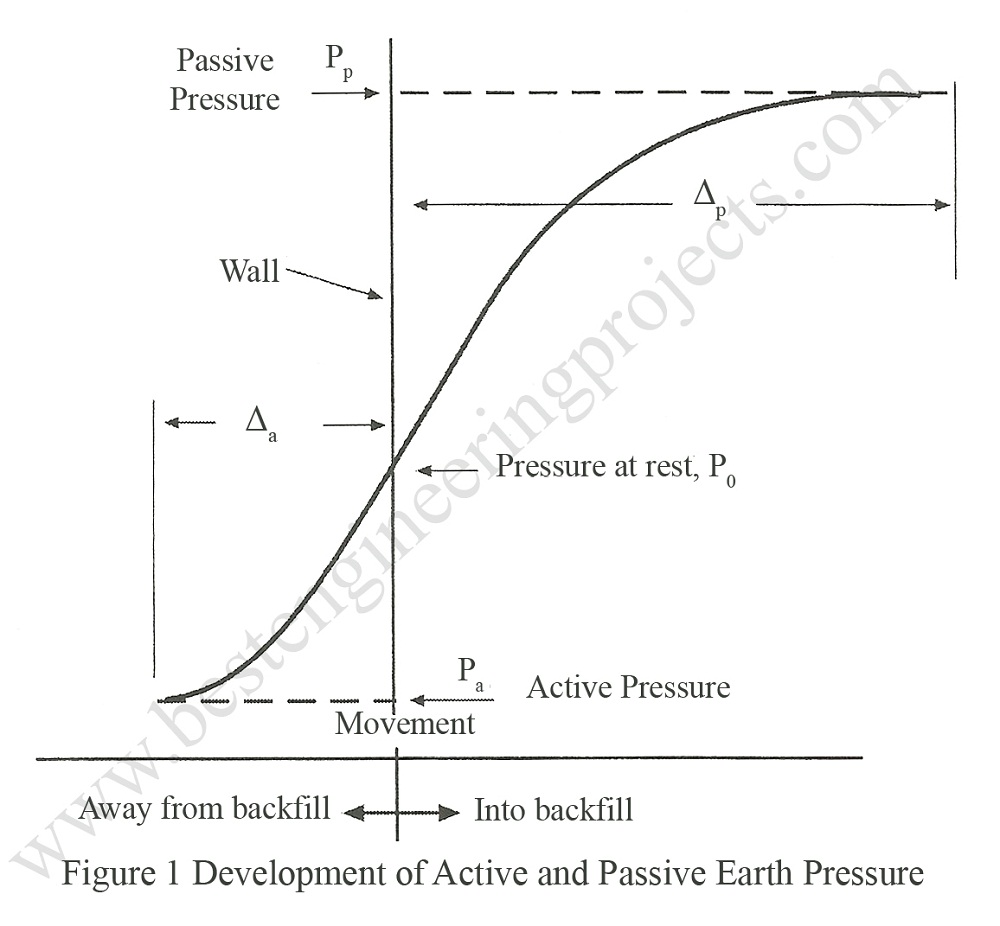The amount of movement is called yield. The relation between yield and magnitude of earth pressure is illustrated in Fig.1. As the earth pressure largely depends upon the flexibility of the wall, the earth pressure problem is a case of soil structure interaction. The soil in the region beyond the active and passive state of failure will be in plastic state while the soil in the region within the active and passive state will be in the elastic state. Such failure of a soil mass is called the state of plastic equilibrium.
The horizontal yield required to reach the active state of plastic equilibrium is very small. In dense sands the horizontal strain required to cause failure of the soil in active state is about 0.5 %. The soil is required to have 0.5 % of strain to attain half of the maximum value of passive pressure in dense sands. On the other hand to attain the full passive resistance, the amount of strains required is 5 % in dense sands and 15 % in loose sands.
Relation Between Yield and Magnitude of Earth Pressure | Earth retaining structures – Every earth retaining structure holds soil on its back. The examples of retaining structures are retaining Walls, sheet pile Walls, crib Walls, bracing in excavation, bridge abutments and basement Walls.
Retaining wall – The retaining wall is a structure built for the purpose of = Vertical stress at any depth
Backfill – Backflll is the material retained on the back of the Wall.
Surcharge – Surcharge is the load above the top surface of a retaining wall. Surcharge adds extra pressure to the retaining Walls.
